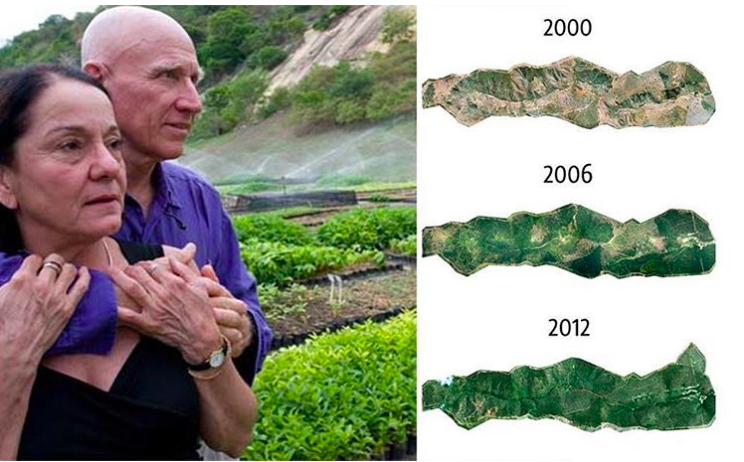About 3 decades ago, Brazilian photojournalist, Sebastião Ribeiro Salgado returned from East Africa. He was on location documenting the horrors of the Rwanda genocide. After his project completed, he took his family to a cattle ranch in Minas Gerais, a region he remembered as lush green and a lively rainforest.
To his disappointment, sadly, the area had undergone a drastic transformation. Only a small portfolio of the area was covered in trees and unfortunately, all the wildlife had disappeared.
“The land was as sick as I was,” he tells The Guardian,
He and his wife Leila came up with an idea. They decide to plant trees in the area in order to bring the forest back to life and hope that wildlife comes back.
In 1998, they set up the Instituto Terra, an environmental organization dedicated to the sustainable development of the Valley of the River Doce. Over the several next years, Sebastião and his team populated the 1,754-acre forest, transforming it from a barren field to a land of tropical paradise.
Today, In addition to 293 species of trees, the forest has about different 172 species of birds, 33 species of mammals, and 15 species of amphibians and reptiles and many of them were endangered of extinction for good.
View this post on Instagram
Um tamanduá de colete! 😁😁😁 Difícil mas escontrado @alice_cavaleiro @josyellypereiradasilva valeew.!
View this post on Instagram
View this post on Instagram
View this post on Instagram






